revolutionary war

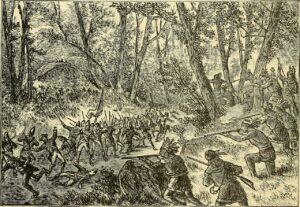 We all think of our first president as being a patriot hero of the Revolutionary War, leading to the independence of our nation and the many freedoms we now enjoy, and he was, but he was other things before he was all that. Everyone is other things before they become the thing they were destined to become. George Washington was born on February 22, 1732, at Popes Creek in Westmoreland County, in the British colony of Virginia. He was the first of six children of Augustine and Mary Ball Washington. His father was a justice of the peace and a prominent public figure who had four additional children from his first marriage to Jane Butler. He did come from a prominent family, and that could have afforded him much, but that wouldn’t have been his style.
We all think of our first president as being a patriot hero of the Revolutionary War, leading to the independence of our nation and the many freedoms we now enjoy, and he was, but he was other things before he was all that. Everyone is other things before they become the thing they were destined to become. George Washington was born on February 22, 1732, at Popes Creek in Westmoreland County, in the British colony of Virginia. He was the first of six children of Augustine and Mary Ball Washington. His father was a justice of the peace and a prominent public figure who had four additional children from his first marriage to Jane Butler. He did come from a prominent family, and that could have afforded him much, but that wouldn’t have been his style.
It is well known that George Washington led the Continental Army to victory against Great Britain in the 1770s and early 1780s, but a few decades earlier, like most young adults, George had a different view of things, and he actually fought for the British Empire. In 1754, 22-year-old Washington, then a lieutenant colonel for the British, managed to actually start a war with his actions. It is said that young Washington led his regiment into a skirmish with French troops, and the action escalated into the French and Indian War. One eyewitness totally blamed Washington, saying, “Colonel Washington begun himself and fired and then his people.” It was “a shot heard ’round the world,” sparking an epic, imperial struggle between Great Britain and France.
In reality, it wasn’t Washington’s fault. Tensions between France and Great Britain had been brewing in North America for more than a century. America had a lot of land, and with that would come a lot of power. The British and the French had been fighting over that land and that power. Swept up in the struggle were the inhabitants of New France, the British colonists, the Native Americans, and regular troops from France and Britain. What George Washington did that day really had little to do with a battle that was coming no matter 
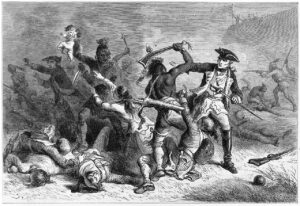 what. Had he not attacked, the war would just have started days or weeks down the road, but it would have started, nevertheless. The British and the French saw the vast lands of what would become the United States of America as a way to expand their power in the world, and like most wars, the land disputes brought with them an explosion that really could be heard around the world. What Washington did was a small battle in a much bigger war. And what he did later, changed history forever.
what. Had he not attacked, the war would just have started days or weeks down the road, but it would have started, nevertheless. The British and the French saw the vast lands of what would become the United States of America as a way to expand their power in the world, and like most wars, the land disputes brought with them an explosion that really could be heard around the world. What Washington did was a small battle in a much bigger war. And what he did later, changed history forever.
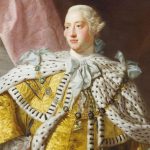 If King George III was hoping to keep the New England colonies dependent on the British by placing taxes, restrictions, lockdowns, and the New England Restraining Act on them, he greatly underestimated the colonists. The New England Restraining Act was endorsed by King George III on March 30, 1775. The Act required New England colonies to trade exclusively with Great Britain as of July 1, 1775, with an additional rule going into effect on July 20, banning colonists from fishing in the North Atlantic.
If King George III was hoping to keep the New England colonies dependent on the British by placing taxes, restrictions, lockdowns, and the New England Restraining Act on them, he greatly underestimated the colonists. The New England Restraining Act was endorsed by King George III on March 30, 1775. The Act required New England colonies to trade exclusively with Great Britain as of July 1, 1775, with an additional rule going into effect on July 20, banning colonists from fishing in the North Atlantic.
The Restraining Act and the Conciliatory Proposition were introduced to Parliament by British prime minister, Frederick, Lord North, on the same day. The Conciliatory Proposition promised that no colony that met its share of imperial defenses and paid royal officials’ salaries of their own accord would be taxed…a ridiculous statement, because the very act of making the forced payments was basically taxing. Supposedly, the British were  conceding to the colonists’ demand that they be “allowed to provide the crown with needed funds on a voluntary basis.” Through the preposition, Parliament would ask for money through requisitions, not demand it through taxes. If you ask me, that is a distinction without a difference. Either way, the colonists were forced to pay for things they shouldn’t have to. The Restraining Act was meant to appease Parliamentary hardliners, who would otherwise have impeded passage of the pacifying proposition. So, Lord North had to work both sides against the middle to get the Conciliatory Proposition passed.
conceding to the colonists’ demand that they be “allowed to provide the crown with needed funds on a voluntary basis.” Through the preposition, Parliament would ask for money through requisitions, not demand it through taxes. If you ask me, that is a distinction without a difference. Either way, the colonists were forced to pay for things they shouldn’t have to. The Restraining Act was meant to appease Parliamentary hardliners, who would otherwise have impeded passage of the pacifying proposition. So, Lord North had to work both sides against the middle to get the Conciliatory Proposition passed.
Unfortunately for North and prospects for peace, General Thomas Gage had already received orders from London to march on Concord, Massachusetts. His orders were to destroy the armaments stockpiled in the town and take Patriot leaders John Hancock and Samuel Adams into custody. Gage had received the orders in January 1775 and arrived in Boston before the Conciliatory Proposition, meaning that he didn’t know about the  agreement made to stop the taxing of the colonists. So, on April 18, 1775, an army of 700 Redcoats marched towards Concord Bridge. It was basically the last straw…the military action that would lead to the Revolutionary War, the birth of the United States as a new nation, the temporary downfall of Lord North, and the near abdication of King George III. The Treaty of Paris marked the end of the conflict and guaranteed New Englanders the right to fish off Newfoundland. It was the very right denied them by the New England Restraining Act. The British learned that they could only push the colonists so far, and then they would lose control of the very people they tried to enslave.
agreement made to stop the taxing of the colonists. So, on April 18, 1775, an army of 700 Redcoats marched towards Concord Bridge. It was basically the last straw…the military action that would lead to the Revolutionary War, the birth of the United States as a new nation, the temporary downfall of Lord North, and the near abdication of King George III. The Treaty of Paris marked the end of the conflict and guaranteed New Englanders the right to fish off Newfoundland. It was the very right denied them by the New England Restraining Act. The British learned that they could only push the colonists so far, and then they would lose control of the very people they tried to enslave.
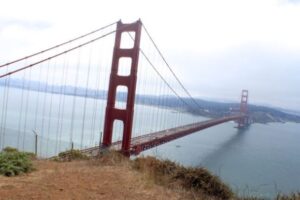
 Battery Spencer was a reinforced concrete Endicott Period 12-inch gun battery, which was located on Fort Baker, Lime Point, Marin County, California. The structure still exists today and is a favorite tourist attraction. The battery was named on Feb 14, 1902, after Major General Joseph Spencer, who was a Revolutionary War hero. Spencer died on January 13, 1789. Construction on the battery began in 1893, and it was completed in 1897. Following its completion, it was transferred to the Coast Artillery for use on September 24, 1897, at a total cost of $110,352.70. It was deactivated in 1942 during World War II.
Battery Spencer was a reinforced concrete Endicott Period 12-inch gun battery, which was located on Fort Baker, Lime Point, Marin County, California. The structure still exists today and is a favorite tourist attraction. The battery was named on Feb 14, 1902, after Major General Joseph Spencer, who was a Revolutionary War hero. Spencer died on January 13, 1789. Construction on the battery began in 1893, and it was completed in 1897. Following its completion, it was transferred to the Coast Artillery for use on September 24, 1897, at a total cost of $110,352.70. It was deactivated in 1942 during World War II.
The battery was originally part of the Harbor Defense of San Francisco. The harbor was likely one of the most vulnerable entrances to San Fransisco, and in the early days of the country, when radar didn’t exist, it was hard to tell if an enemy was sneaking into the harbor, especially a submarine. Battery Spencer was a concrete coastal gun battery with three M1888 12-inch guns mounted on long range Barbette M1892 carriages. It was constructed on top of the five front emplacements of Battery Ridge. Back in the early 1900s, Battery Spencer was one of the main protection points for the San Francisco Bay. It featured multiple lookout points that were operated by the military and a few buildings for housing the generators and shells. It was used on and off until World War II when a lot of it was scrapped for war efforts.
The guns were mounted on 3 emplacements. Emplacements #1 and #2 were separated by a magazine with two shell rooms, a powder room, and a shell hoist room. Emplacement #3 had its own shell room, powder room, and hoist room. Spencer Battery was a two-story battery with the magazines on the lower level and the gun emplacements on the upper level. The missiles, or more likely cannon balls at first, were originally moved from the magazine level to the loading level with hand powered projectile hoists. In 1908, the hand powered hoists were replaced with electric Taylor-Raymond front delivery hoists. The new hoists were put into service on September 30, 1908. There were no powder hoists at Battery Spencer, meaning that gun powder had to be moved by hand.
Along the access road that runs north of Emplacement #1, was the BC Post and a separate building that had four rooms. The rooms consisted of a CO room, a guard room, an oil room, and a large 12′ by 43′ plotting room. All of these were used to plan any defensive action taken by the soldiers stationed at Battery Spencer. Two other buildings across the road completed the battery. One housed the tools and rammers, the other a latrine building with separate facilities for officers and enlisted. In 1910 the BC post and the plotting room were remodeled and updated. The work was accepted for service on August 5, 1910, at a cost of $1680.68.
When the United States entered World War I, it was decided that the large caliber coastal defense gun tubes should be removed from coastal batteries and sent into service in Europe. First, they were sent to arsenals for modification and mounting on mobile carriages, both wheeled and railroad. Strangely, most of the removed gun tubes never made it to Europe. Many were either remounted at the batteries or remained at the arsenals until needed elsewhere. One gun was removed from Battery Spencer emplacement #3 in 1918 and sent to Battery Chester at Fort Miley. The gun at Battery Spencer was never replaced, and the emplacement was considered abandoned. The carriage remained in place until it was ordered salvaged on January 10, 1927. World War II brought the first large scale scrap drive, and the remaining two guns and carriages were ordered scrapped on November 19, 1942. 

These days Battery Spencer is part of the Golden Gate Recreation Area (GGNRA) administered by the National Park Service. It is a favorite historical attraction, even though no period guns or carriages are in place. The site is also one of the very best views of the Golden Gate Bridge and San Francisco.

 When a country is fighting for recognition, one of the most important events is when other countries recognize your country as being an independent nation. It’s rather hard to conduct business with other nations, if you are viewed as a rouge or non-existent nation. That was the position the United States found themselves in right after the Declaration of Independence was adopted. Just because a country adopts its declaration of independence, doesn’t mean that it’s a done deal. That document can and has been the cause of major wars. The United States was no exception on the war end of that either. They fought long and hard to win that declared independence from Great Britain.
When a country is fighting for recognition, one of the most important events is when other countries recognize your country as being an independent nation. It’s rather hard to conduct business with other nations, if you are viewed as a rouge or non-existent nation. That was the position the United States found themselves in right after the Declaration of Independence was adopted. Just because a country adopts its declaration of independence, doesn’t mean that it’s a done deal. That document can and has been the cause of major wars. The United States was no exception on the war end of that either. They fought long and hard to win that declared independence from Great Britain.
Finally, the coveted recognition came when on December 17, 1777, the French foreign minister, Charles Gravier, count of Vergennes, officially acknowledged the United States as an independent nation. It came after news of the Continental Army’s overwhelming victory against the British General John Burgoyne at Saratoga. The victory gave Benjamin Franklin new leverage in his efforts to rally French support for the American rebels. Although the victory occurred in October, news did not reach France until December 4th. Remember that this mail system was worse than “snail mail” ever was. Messages had to be sent by ship across the ocean.
Benjamin Franklin had quickly mustered French support upon his arrival in December 1776. France’s humiliating loss of North America to the British in the Seven Years’ War made the French eager to see an American victory. Still, the French king worried about the consequences of backing “the rebels” openly. You can’t really blame him because an act like that could bring war to his own country. Still, he did back them in every other way. In May 1776, Louis XVI sent unofficial aid to the Continental forces and the playwright Pierre-Augustin Caron de Beaumarchais helped Franklin organize private assistance for the American cause.
Benjamin Franklin, who often wore a fur cap, captured the imagination of Parisians as an American man of nature and his well-known social charms stirred French passions for all things American. His personality made him the toast of Parisian society. He was very knowledgeable, and he had a way of enchanting groups of people 
 with his wide-ranging knowledge, social graces, and witty conversation. Nevertheless, he was not allowed to appear at court, so any legal assistance he might have offered in the defense of the United States, was never heard.
with his wide-ranging knowledge, social graces, and witty conversation. Nevertheless, he was not allowed to appear at court, so any legal assistance he might have offered in the defense of the United States, was never heard.
Finally, with the impressive and long-awaited rebel victory at Saratoga, Louis XVI was convinced that the American rebels had some hope of defeating the British empire. His enthusiasm for the victory paired with French Foreign Minister Gravier’s concern that the loss of Philadelphia to the British would lead Congress to surrender, gave Franklin two influential allies with two powerful, albeit opposing reasons for officially backing the American cause, and so it was that a formal treaty of alliance with the United States followed on February 6, 1778.

 Most of us think of everything changing instantly when the Declaration of Independence was signed, and officially it did, but there was more to it than that. After years of oppression under the rulership of the British, the citizens of the 13 colonies had had enough. They formed the Continental Congress. The term “Continental Congress” most specifically refers to the First and Second Congresses of 1774–1781 and, at the time, was also used to refer to the Congress of the Confederation of 1781–1789, which operated as the first national government of the United States until being replaced under the Constitution of the United States. The 56 delegates to the Second Continental Congress represented the 13 colonies, 12 of which voted to approve the Declaration of Independence on July 4, 1776…our accepted day of Independence. The signing of the United States Declaration of Independence actually occurred on August 2, 1776, at the Pennsylvania State House in Philadelphia, which later to become known as Independence Hall. I suppose that a purist might insist that August 2nd should be our Independence Day, but the 56 delegates to the Second Continental Congress felt like once it was agreed upon, it was done. The signing was merely a technicality.
Most of us think of everything changing instantly when the Declaration of Independence was signed, and officially it did, but there was more to it than that. After years of oppression under the rulership of the British, the citizens of the 13 colonies had had enough. They formed the Continental Congress. The term “Continental Congress” most specifically refers to the First and Second Congresses of 1774–1781 and, at the time, was also used to refer to the Congress of the Confederation of 1781–1789, which operated as the first national government of the United States until being replaced under the Constitution of the United States. The 56 delegates to the Second Continental Congress represented the 13 colonies, 12 of which voted to approve the Declaration of Independence on July 4, 1776…our accepted day of Independence. The signing of the United States Declaration of Independence actually occurred on August 2, 1776, at the Pennsylvania State House in Philadelphia, which later to become known as Independence Hall. I suppose that a purist might insist that August 2nd should be our Independence Day, but the 56 delegates to the Second Continental Congress felt like once it was agreed upon, it was done. The signing was merely a technicality.
For the British government, neither of those days was acceptable, nor was the day they found out about the plan of the 13 colonies to gain their independence. In fact, that day…August 10, 1776, was the least acceptable day of all, because the British had no intention of giving the Colonies their independence…not without a fight anyway. When the news reached London, the British saw the conflict, centered in Massachusetts, as a local uprising within the British empire. Some Americans saw it that way too, but the reality is that the Declaration of Independence transformed the 13 British colonies into American states. King George III saw it as a colonial rebellion, but the Americans saw it as a struggle for their rights as British citizens. However, when Parliament continued to oppose any reform and remained unwilling to negotiate with the American rebels and instead hired Hessians, German mercenaries, to help the British army crush the rebellion, the Continental Congress began to pass measures abolishing British authority in the colonies. It was a brave move that would cost many of the 56 signers more than they could ever have imagined.
Following the signing of the Declaration of Independence, five of the signers were captured by the British and labeled as traitors. They were tortured before they died. Twelve of them had their homes ransacked and burned. Two lost their sons, who served in the Revolutionary War. Another two had sons captured, and nine of the 56 fought and died from wounds or hardships of the Revolutionary War. These men knew the risks they were taking. They knew that signing the Declaration of Independence very likely would cost them their lives. Nevertheless, they also knew that they couldn’t let the tyranny continue any longer. They had come to America to escape the tyrannical British government, and they could not allow the British government to make them slaves again. They signed, knowing they would likely die, but they saw no other way. These men weren’t soldiers…so, who were they. Twenty-four were lawyers and jurists. Eleven were merchants. Nine were farmers and plantation owners. All of them were men of means and well-educated, but they signed the Declaration of 
 Independence, knowing that the penalty would be death if they were captured. These men had their livelihood threatened and destroyed, their homes confiscated and sold, and some were threatened so badly that they had to constantly move their families from place to place. Still, not one of them saw this as one option of many. When it came to taking their country back, they saw it as the only option.
Independence, knowing that the penalty would be death if they were captured. These men had their livelihood threatened and destroyed, their homes confiscated and sold, and some were threatened so badly that they had to constantly move their families from place to place. Still, not one of them saw this as one option of many. When it came to taking their country back, they saw it as the only option.

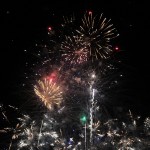 This year, mostly because of the year of the Covid-19 lockdowns, Americans are so ready to get out there. Whether we choose to wear a mask or not, we are done with staying home, small groups, missed holidays, and mostly…Covid-19!! Bob and I were blessed in that we were able to travel to the Black Hills for the Independence Day holiday last year, but many states didn’t allow it. Now…suddenly, many states are open. Of course, there are those who want us to keep things to small groups, or better yet, just stay home and don’t celebrate at all. Our answer to that, “No!! We are done with giving up our freedom!!” This nation, “One Nation Under God,” was founded on the principles of “liberty and justice for all” and “let freedom ring.” Our soldiers died to make sure that we continued to have that freedom. And we are not giving it up now!!
This year, mostly because of the year of the Covid-19 lockdowns, Americans are so ready to get out there. Whether we choose to wear a mask or not, we are done with staying home, small groups, missed holidays, and mostly…Covid-19!! Bob and I were blessed in that we were able to travel to the Black Hills for the Independence Day holiday last year, but many states didn’t allow it. Now…suddenly, many states are open. Of course, there are those who want us to keep things to small groups, or better yet, just stay home and don’t celebrate at all. Our answer to that, “No!! We are done with giving up our freedom!!” This nation, “One Nation Under God,” was founded on the principles of “liberty and justice for all” and “let freedom ring.” Our soldiers died to make sure that we continued to have that freedom. And we are not giving it up now!!
The Covid-19 lockdowns were never designed to make us healthier, but rather to take our freedoms, and we aren’t going to take it anymore. They still want us to stay home, but everyone I know of has opted to go out and celebrate or have people in to celebrate. We all agree that our forefathers never intended for the people of this nation to give up their rights to “kowtow” to the government!! Especially when the disease has a 97% survival rate!! And believe me when I say that no one is saying that it didn’t kill people, but that many of the people in lockdown would not have become sick, much less died. The Lockdown did nothing but hurt our economy, and rob us if our freedom.
This year is a “new year” for this nation. We are ready to take back our country and our freedom. We know who stole it, and we know who didn’t. We are excited about getting back out there and celebrating our nation’s birthday again!! 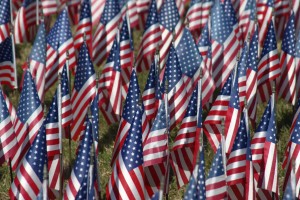 This is a great nation, and we will not allow it to be stolen from us. We are ready to fight for our freedom again, and we refuse to be pushed back.
This is a great nation, and we will not allow it to be stolen from us. We are ready to fight for our freedom again, and we refuse to be pushed back.
From the brave men and women who fought for the freedom of this nation in the Revolutionary War, to the brave men and women who will fight for it again, I honor you!! You are the epitome of greatness!! You don’t give up. This is our nation and this is our Independence Day!! I pray that each of you has a wonderful holiday with family and friends. Let’s get out there and be independent again!! God bless you all and God bless America!!

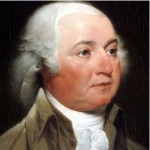 No country can truly be secure without an army, and the Thirteen Colonies (now the United States) was no different. After the beginning of the Revolutionary War, John Adams began to see the value of an army, so on June 10, 1775, he proposed to Congress, at a meeting in Philadelphia, that the men laying siege to Boston should be considered a Continental Army led by a general. The men who were mostly from New England, had armed themselves and rushed to surround British forces in Boston following the Battle of Lexington and Concord. Adams, who was representing Massachusetts, realized that the military effort would only succeed if the British thought the colonies were united. To achieve his united feel, Adams suggested than they appoint George Washington of Virginia, to command the Continental forces, despite the fact that New Englanders were used to fighting in local militias under officers elected from among their own ranks.
No country can truly be secure without an army, and the Thirteen Colonies (now the United States) was no different. After the beginning of the Revolutionary War, John Adams began to see the value of an army, so on June 10, 1775, he proposed to Congress, at a meeting in Philadelphia, that the men laying siege to Boston should be considered a Continental Army led by a general. The men who were mostly from New England, had armed themselves and rushed to surround British forces in Boston following the Battle of Lexington and Concord. Adams, who was representing Massachusetts, realized that the military effort would only succeed if the British thought the colonies were united. To achieve his united feel, Adams suggested than they appoint George Washington of Virginia, to command the Continental forces, despite the fact that New Englanders were used to fighting in local militias under officers elected from among their own ranks.
Five days later, on June 15th, Adams formally nominated George Washington as commander in chief of the Continental Army. Washington accepted the post on June 16th, and on June 17th, with no rest for the troops, the newly named army fought the Battle of Bunker Hill. John Adam’s wife, Abigail, and son, John Quincy Adams, watched the battle from their hometown of Braintree.
Just as the British had discovered the difficulties of waging war with rowdy and uncontrollable Yankees for soldiers during the Seven Years’ War, Washington was equally unimpressed when he met his supposed army. Just as the British had, he saw “stupidity” among the enlisted men, who were used to the easy familiarity of being commanded by neighbors. Upon arrival outside Boston, General George Washington organized this body of more than 22,000 men, known as the Main Army, into three divisions of two brigades each, promptly 
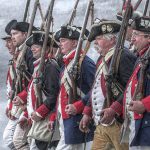 insisting that the officers behave with decorum and the enlisted men with respect. Washington had some success with this first Continental Army, but when the New Englanders went home to their farms at the end of 1775, General Washington had to start fresh with new recruits in 1776. In retrospect, I’m sure Washington had better control over the second Continental Army, because they didn’t know any other leadership style. George Washington remained the commander of the Continental Army until the end of the Revolutionary War.
insisting that the officers behave with decorum and the enlisted men with respect. Washington had some success with this first Continental Army, but when the New Englanders went home to their farms at the end of 1775, General Washington had to start fresh with new recruits in 1776. In retrospect, I’m sure Washington had better control over the second Continental Army, because they didn’t know any other leadership style. George Washington remained the commander of the Continental Army until the end of the Revolutionary War.
 Pirates, as we know them, are criminals who hijack ships to rob them of anything of value on board. Sometimes however, a “pirate” can actually be working for the government, or at least on behalf of the government. Such was the case on April 10, 1778, when Commander John Paul Jones and his crew of 140 men aboard the USS Ranger set sail from the naval port at Brest, France. They headed toward the Irish Sea. Their mission was to begin raids on British warships. This was the first mission of its kind during the Revolutionary War. These missions weren’t called piracy, but when we compare the two acts, they pretty much were piracy. They just weren’t for personal gain, but rather for the good of the country and the war effort. No one was safe, not passengers and certainly not the crew.
Pirates, as we know them, are criminals who hijack ships to rob them of anything of value on board. Sometimes however, a “pirate” can actually be working for the government, or at least on behalf of the government. Such was the case on April 10, 1778, when Commander John Paul Jones and his crew of 140 men aboard the USS Ranger set sail from the naval port at Brest, France. They headed toward the Irish Sea. Their mission was to begin raids on British warships. This was the first mission of its kind during the Revolutionary War. These missions weren’t called piracy, but when we compare the two acts, they pretty much were piracy. They just weren’t for personal gain, but rather for the good of the country and the war effort. No one was safe, not passengers and certainly not the crew.
Commander John Paul Jones, will always be remembered as one of the most daring and successful naval commanders of the American Revolution. John Paul Jones was born under the simple birth name of John Paul on July 6, 1747, in a small cottage in Arbigland, Scotland, to John Paul Sr and Margaret Paul. His dad was a gardener, but Jones found his calling not in gardening, but at sea. He earned an apprenticeship with the British Merchant Marine at the age of 13. His seafaring adventures would eventually take him to America and, like many other sailors before him, Jones got involved in the slave trade. However, the realities of human trafficking repulsed him, and he returned to shipping cargo duties.
1773 found Jones in a very difficult situation. He murdered a mutinous sailor on the island of Tobago in self-defense…which is not really murder, but maybe in those days things were different. Whatever the case may be,  Jones believed he wouldn’t receive a fair trial, so he fled to America. It was there he added the last name “Jones” to conceal his identity. Jones needn’t have worried, because the American colonies were too busy stoking the flames of war with the British to have noticed his past. When the American Revolution broke out in 1775, Jones who remembered Britain’s cruel treatment of the Scots, decided that he would side with the colonists. He joined the new Continental Navy.
Jones believed he wouldn’t receive a fair trial, so he fled to America. It was there he added the last name “Jones” to conceal his identity. Jones needn’t have worried, because the American colonies were too busy stoking the flames of war with the British to have noticed his past. When the American Revolution broke out in 1775, Jones who remembered Britain’s cruel treatment of the Scots, decided that he would side with the colonists. He joined the new Continental Navy.
Jones began skillfully attacking British ships off the American coastline and expanded his operations from there. He first captained the USS Providence, set sail to Nova Scotia, and started capturing British vessels. Next, he took command of Ranger and set course to France, where his vessel was saluted by the French Admiral La Motte Piquet. It was the first American vessel ever to be recognized by a foreign power…pretty good for a new country. In 1779 Jones made history as one of the greatest naval commanders of the Revolutionary War. His shining moment came when, while En route to raid British shipping, Jones’ warship, Bon Homme Richard, came head to head with the more powerful English warship HMS Serapis off the North Sea. The battle went on for three hours between the two vessels. At one point, Jones slammed Bon Homme into Serapis, strategically tying them together. As the story goes, when the British asked if Jones was ready to surrender, he famously responded, “I have not yet begun to fight!” Inspired by Jones’ bravado, one of his naval officers tossed a grenade onto Serapis. The severe damage caused the British to surrender in the end. Jones’ became an  international hero. After the war ended, the Continental Navy dissolved due to lack of funds. Jones was dubbed the father of the United States Navy.
international hero. After the war ended, the Continental Navy dissolved due to lack of funds. Jones was dubbed the father of the United States Navy.
Jones retired to Paris, but his health took a turn for the worse. On July 18, 1792, he was found dead in his apartment at the age of 45. He was laid to rest in a French cemetery, but the plot of land was later sold and forgotten. Over one hundred years would pass before the United States was able to recover Jones’ remains with the help of French officials. After much research, his body was located and exhumed, and to the surprise of French pathologists, Jones’ body was excellently preserved. His initial autopsy concluded that the cause of his death was kidney failure, with later clinical studies believing his condition was exacerbated by a heart arrhythmia. The United States received Jones’ remains and buried them in a tomb inside the chapel of the U.S. Naval Academy in Annapolis, Maryland.
 I am sometimes amazed at the ability of humans to be heinously cruel to other human beings. From murders, to slave owners, to prisons or prisoner of war camps, man has the ability to act out evil in its purest form. Still, one would not have expected such evil in the American Revolutionary War era. Well, one would be wrong. We all know that war is a horrific event, but worse than losing life and limb in battle, seems to be the fate faced by those who are captured by the enemy forces, only to be tortured and even killed.
I am sometimes amazed at the ability of humans to be heinously cruel to other human beings. From murders, to slave owners, to prisons or prisoner of war camps, man has the ability to act out evil in its purest form. Still, one would not have expected such evil in the American Revolutionary War era. Well, one would be wrong. We all know that war is a horrific event, but worse than losing life and limb in battle, seems to be the fate faced by those who are captured by the enemy forces, only to be tortured and even killed.
During the Revolutionary War, being captured by the British often meant being sent to a prison ship, the worse of which was the HMS Jersey. Over the years of the war, approximately 11,000 prisoners of war perished on the HMS Jersey. The number of American field casualties during that war was approximately 4,500. That is a stunning difference. The HMS Jersey often held thousands of prisoners at one time, in quarters that were so close, that it could be likened to being packed in like sardines in a tin. There was no light, no medical care, barely any oxygen, and very little in the way of food and clean water. The guards on the prison ships were not concerned with keeping their prisoners alive, and HMS Jersey was the worst of them all.
The little food the prisoners were given was moldy, putrefied, and worm infested. The prisoners had to choose daily to eat the horrible food, or starve. One prisoner Ebenezer Fox, who survived said, “The bread was mostly mouldy, and filled with worms. It required considerable rapping upon the deck, before these worms could be dislodged from their lurking places in a biscuit. As for the pork, we were cheated out of it more than half the time, and when it was obtained one would have judged from its motley hues, exhibiting the consistence and appearance of variegated soap, that it was the flesh of the porpoise or sea hog, and had been an inhabitant of the ocean, rather than a sty. The provisions were generally damaged, and from the imperfect manner in which they were cooked were about as indigestible as grape shot.” That pretty much says it all, I would say. The British soldiers were seemingly unaffected by the image of prisoners banging their biscuits against the deck to remove worms, because this treatment continued throughout the conflict.
Because the prisoners were kept at sea, the smell of a piece of dirt from the shoes of a soldier back from shore leave became one of the prisoners’ greatest delights. I guess that one can always find some good, even in the worst situations, if one looks for it. Captain Dring, a survivor who wrote prolifically about his experiences on the Jersey, recalled one particularly strange consolation. When someone died on the ship, their remains were usually thrown overboard, but occasionally they were allowed to be taken ashore and laid to rest. Dring was part of a group that was tasked with digging graves on land. The men chosen for this duty were ecstatic to be on land again. Dring even took off his boots simply to feel the earth underneath his feet. However, when the crew came across a piece of broken-up turf, they did something extraordinary: “We went by a small patch of turf, some pieces of which we tore up from the earth, and obtained permission to carry them on board for our comrades to smell them. Circumstances like these may appear trifling to the careless reader; but let him be assured that they were far from being trifles to men situated as we had been. Sadly did we approach and reenter our foul and disgusting place of confinement. The pieces of turf which we carried on board were sought for by our fellow prisoners, with the greatest avidity, every fragment being passed by them from hand to hand, and its smell inhaled as if it had been a fragrant rose.”
The known fate of the men on board the prison ships, and especially HMS Jersey was a slow and painful death. Most knew better than to expect to survive their ordeal. They had seen too many of their comrades die right before their eyes, to have much hope that they could make it out. To make mattes worse, the majority of the prisoners aboard the Jersey were young, inexperienced farmhands, not hardened soldiers with survival experience. Only a few of Washington’s army were soldiers with any 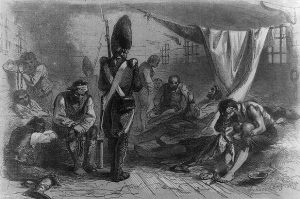 experience. The rest were provincial people, and many had never traveled beyond the limits of the small county where they lived. Imagine the horror of war, and then the conditions on HMS Jersey to the young, innocent men. The constant punishment, meager rations, lack of light, and lack of privacy could be tolerated, but the inactivity and helplessness most likely added depression and despair to their suffering. Times were different then, and there were things that were not available, but many of the things the prisoners suffered could have been avoided, especially the overcrowding and unsanitary conditions, but apparently they just didn’t care.
experience. The rest were provincial people, and many had never traveled beyond the limits of the small county where they lived. Imagine the horror of war, and then the conditions on HMS Jersey to the young, innocent men. The constant punishment, meager rations, lack of light, and lack of privacy could be tolerated, but the inactivity and helplessness most likely added depression and despair to their suffering. Times were different then, and there were things that were not available, but many of the things the prisoners suffered could have been avoided, especially the overcrowding and unsanitary conditions, but apparently they just didn’t care.

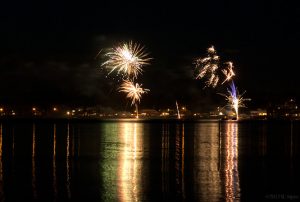 For many years, my husband, Bob Schulenberg and I have gone to the Black Hills to celebrate Independence Day. It has been our tradition for about 30 years. This year, things got changed up a bit. Our daughter, Amy Royce and her husband Travis invited us to come to Washington to spend the holiday with them. We will be watching the fireworks display at Semiahmoo Bay on the 4th. Bob and I went there a couple of years ago when we spent Thanksgiving with Amy’s family. The bay is beautiful, and I’m sure it will be even more fun in the summertime warmth…although it wasn’t very cold in November. We have never seen fireworks set off over water, so that will definitely be something new, and something about which we are very excited.
For many years, my husband, Bob Schulenberg and I have gone to the Black Hills to celebrate Independence Day. It has been our tradition for about 30 years. This year, things got changed up a bit. Our daughter, Amy Royce and her husband Travis invited us to come to Washington to spend the holiday with them. We will be watching the fireworks display at Semiahmoo Bay on the 4th. Bob and I went there a couple of years ago when we spent Thanksgiving with Amy’s family. The bay is beautiful, and I’m sure it will be even more fun in the summertime warmth…although it wasn’t very cold in November. We have never seen fireworks set off over water, so that will definitely be something new, and something about which we are very excited.
Celebrating our nation’s independence has always been a favorite holiday for Bob and me. We love everything about it. The fireworks take my thoughts back to history lessons, of the Revolutionary War. The rockets shot at ships, and the fighting that took place because we were a nation ready to be our own country. The fighting was sometimes brutal, but it was necessary. The patriots willingly gave their lives for the cause of independence. The fighting took place on land and water, and yet we have never seen fireworks over the water…until now. In my mind, I can see the ships from the Revolutionary War out in the bay. I can imagine the fireworks are the rockets, and the war is real. Nevertheless, I am glad that it isn’t really real, because I would not want our soldiers to have to relive that, but I can feel like a mouse in the corner, watching as history unfolds in front of my eyes…at least I can imagine it.
Of course, the fireworks aren’t the real thing, but rather just reminder of what our nation and the soldiers who fought for our independence, went through. My imagination of happened is just that…a figment of my imagination, because those events are long in the past. Still, I don’t believe that we should ever forget the lessons of war. There is always a reason we go to war…a wrong that must be made right, tyranny that must be stopped, killing that must be squashed, and slaves who must be made free. Good nations don’t go to war for 
 evil purposes. I believe that the most important lesson to be taken away from any war, is that we must never trust our enemies, and even more importantly, we must never allow the enemy to infiltrate our nation and our government. Happy Independence Day to our great nation…the United States of America. Forever may our flag fly and forever may our nation stand.
evil purposes. I believe that the most important lesson to be taken away from any war, is that we must never trust our enemies, and even more importantly, we must never allow the enemy to infiltrate our nation and our government. Happy Independence Day to our great nation…the United States of America. Forever may our flag fly and forever may our nation stand.

